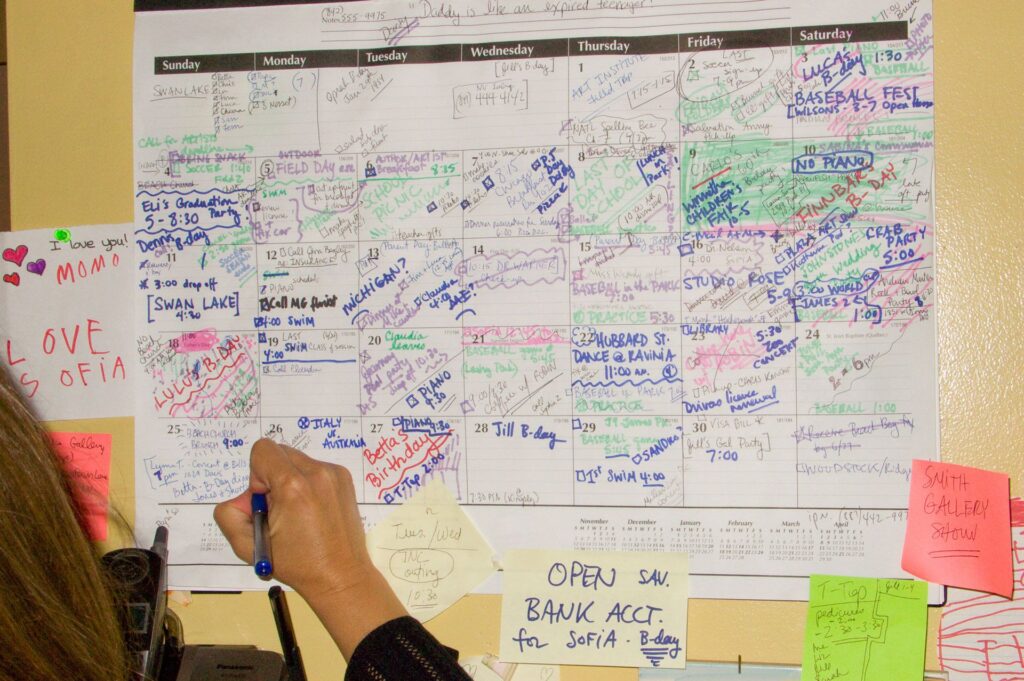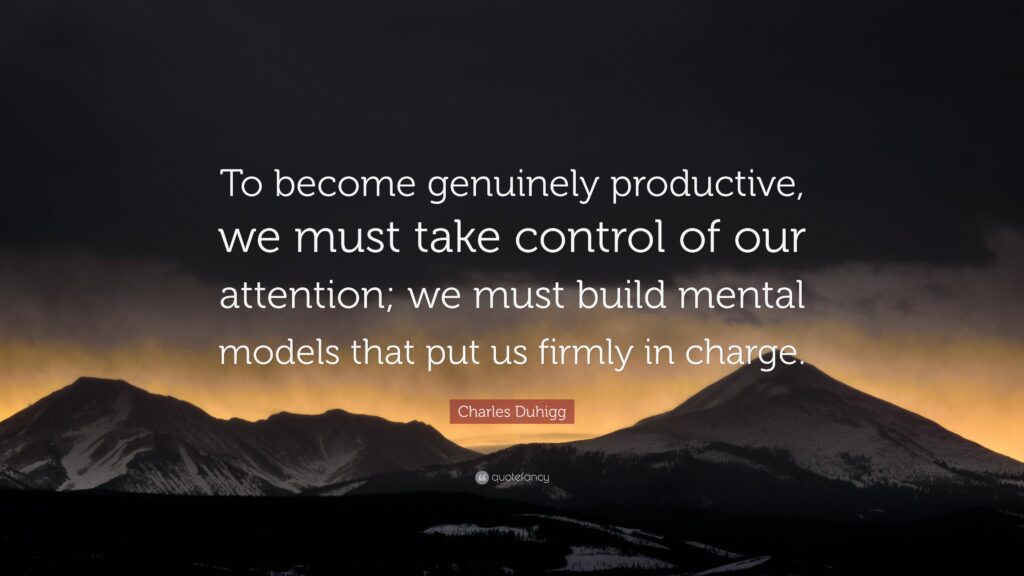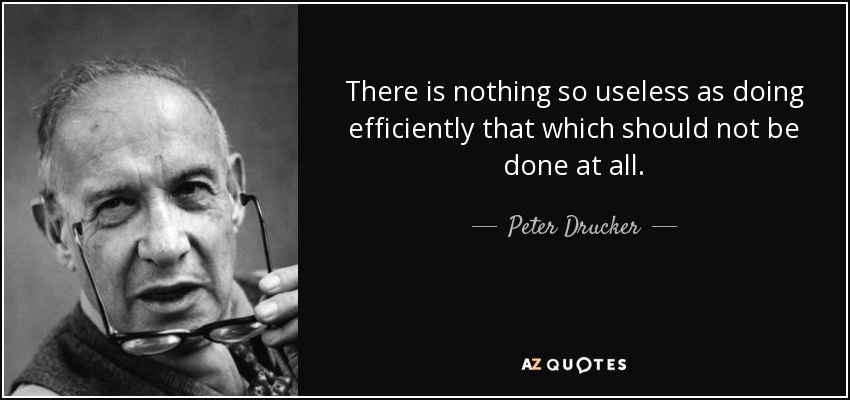I hate clickbait, so I’ll tell you what it is up front: “thinking more deeply,” according to Charles Duhigg. Read on to learn more…
Part 1 – Productivity and Happiness
I tend to put a good bit of thought and effort into New Year’s resolutions at the turn of the calendar year, but with a lot of changes happening at work right now (focusing organizational strategy, aligning job responsibilities with program priorities, planning for notable shifts in our budget, transitioning staff in and out of the organization…), the change of the fiscal year seemed like a particularly good time to do some thinking about intentions (and also checking in on my 2023 resolutions, now that we’re – tragically – halfway through the year.)
Time to Assess
The past couple months at work have been a little more hectic than usual, and non-profit life is always hectic – if you’ve ever worked for one, you know. Every spring I’ve been with the organization has brought new challenges (COVID-19, strategic planning, and 10-year anniversary programming, respectively) but this spring felt like it was cranked to 11, at least for me. Since I felt such strong demands on my attention from work, I knew it was particularly critical to be mindful of identifying my needs and defending my time over these last few months, which ultimately helped me lay the groundwork for some healthier habits that will help stave off burnout.

Image credit: [1]
Fortunately, I was already making use of a relevant, twice-daily ritual I had started last December, thanks to Catherine Price, while I was reading her book The Power of Fun: How to Feel Alive Again. [2] In the book, Price described a friend’s day planner, which sounded like the Panda Planner [3] or something like it. She explained that people who take time every day to practice gratitude, intention-setting, and reflection generally felt happier – and that there were studies to back up this statement. Part of Panda Planner’s approach involves taking time every morning to identify examples of gratitude and excitement, as well as every evening to reflect on what went well and what could go better. For the record, I have felt happier while doing this over the last seven months. The other aspect of the planner is the planner component: setting priorities and piecing out the tasks to achieve them, optimizing efficiency in the process.
Their advertising says that their approach is based on science to increase happiness and productivity, and I imagine they’re referencing some of the same research as Price. However, some of their advertisements over the years seem to have equated the happiness with productivity, and that, to me, feels like a disconnect between the developers and the marketing department. I speak from experience when I say that productivity is not the key to happiness, at least not what I think of as productivity, which is checking more items off of my to-do list only to have it fill up again. My question about productivity’s relationship to happiness first involves examining the definition of productivity – and I heard an interesting take on it recently.
Demands On Our Attention
When I was driving back east to visit my parents last month, I spent some of my time in the car to catch up on a podcast that I used to listen to on my commute to work (back when commuting was a thing I did). Brené Brown’s Dare to Lead, both the book [4] and the podcast, [5] have been incredible tools for me not just as a professional, but in my personal life as well. The episode that happened to come up next in my list was a conversation with Charles Duhigg, Pulitzer Prize-winning reporter and author of The Power of Habit: Why We Do What We Do in Life and Business, [6] discussing productivity. [7]

Image credit: [8]
I don’t intend to recap the entire conversation, but I would encourage you to listen to it if you haven’t. A lot of the episode resonated with me, particularly because of the focus on optimizing action by minimizing distraction, which is something I’ve been trying to do a lot lately, especially since my digital detox for Lent this year. [9] The life-or-death example Duhigg gives, which I have now shared with others in conversations about distractions in work environments, is the story of Qantas flight 32, in which a plane engine blew up mid-air, puncturing a wing and fuel tank. [10]
Duhigg’s describes the captain dealing with cascading alarms and warnings in the cockpit, fixing one only to get five more pop up, and then recognizing that he was falling into a “cognitive tunnel,” which means that when our brains are overwhelmed, we react to the most obvious stimuli – in the captain’s case, flashing lights and warning bells. The captain paused, breathed, and realized that if he was spending his mental energy responding to alerts, he was not flying the plane or making decisions about how to land it safely. And he did land safely, with no injuries on board.
Most of us are not commercial pilots, but it’s fair to say that we still experience feelings of overwhelm in our daily lives, whether at home and/or at work. The description of the cognitive tunnel was particularly compelling for me because I often get into the habit of responding to questions and putting out fires to such an extent that when I finally do have several hours without meetings and have the opportunity to be productive, it can feel very difficult to switch gears to more proactive, focused work. (Sometimes I actually find myself looking for distractions or people who need something from me.) Living with reduced distractions was a big mental shift for me during my digital detox, when I wasn’t constantly getting pinged with notifications from social media – for a while I was looking for them, but eventually I became more used to focusing my attention on the task at hand. For the record, focused attention is a habit that can be achieved with practice.

Image credit: [11]
There are echoes of the Konmari Method here in this search for what is truly essential. [12] As Marie Kondo tells us (yes, I will always find a way to bring her into a conversation), people who are good at organization are just better hoarders. Using planners and productivity apps to optimize what is already on our plate is a recipe for burnout, as I saw with my Panda Planner in 2019. The key to productivity is to make sure that we are using the right tools for the job but also that we’re using those tools effectively. More on that next week.
~
In the meantime, I’d love to hear about your experiences, wins, or challenges with prioritizing your time and focusing your attention.
Thanks for reading!
[1] https://classicalliberalarts.com/blog/the-right-and-wrong-reasons-for-scheduling/
[2] https://www.goodreads.com/en/book/show/57569793-the-power-of-fun
[4] https://www.goodreads.com/en/book/show/40109367
[5] https://brenebrown.com/podcast-show/dare-to-lead/
[6] https://www.goodreads.com/book/show/12609433-the-power-of-habit
[7] https://brenebrown.com/podcast/brene-with-charles-duhigg-on-habits-and-productivity/
[9] https://radicalmoderate.online/digital-detox-ground-rules/
[10] https://en.wikipedia.org/wiki/Qantas_Flight_32
[11] https://www.azquotes.com/quote/81897
[12] https://konmari.com/
0 Comments